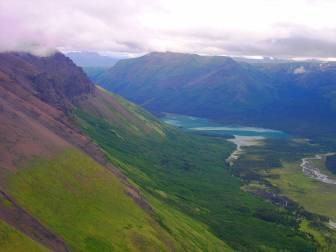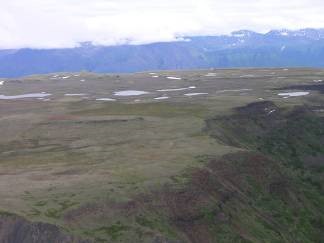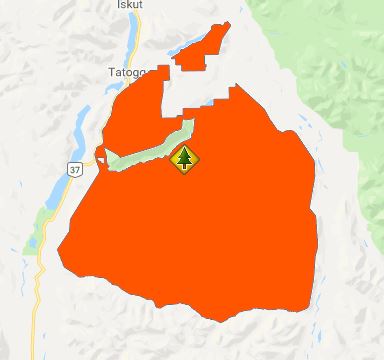Todagin Wildlife Management Area
Date Designated: March 19, 2001
Purpose: Conservation and management of critical habitat for Stone Sheep and other habitat and wildlife values.
Size: 122,787 hectares
Region: Skeena
Nature and culture
Fish and Wildlife: The Todagin WMA includes critical habitat for significant Stone Sheep populations, and also supports Mountain Goats, Grizzly Bears, Wolves, Woodland Caribou, Hoary Marmots, Moose and raptors. Rainbow Trout populate many of the streams and lakes. Over 120 species of bird utilize the area, including Northern Goshawk, Great Horned Owl, Yellow-bellied Sapsucker, Green-winged Teal, blue-listed Short-eared Owl and endangered Hudsonian Godwit.
Physiography, Climate and Vegetation: Located within the Iskut River and Klappan River major watersheds, the WMA includes Todagin Plateau and Tsatia Mountain. Stream erosion, glaciation, and volcanic activity were the main landform influences. The region is characterized by open, gently rolling plateaus and highlands, broad valley bottoms and subalpine areas. Mountains consist of folded sedimentary layers with serrated and jagged peaks formed by alpine glaciation. The principal rocks are black fine-grained argillite and shale, and dark greywacke. Summers are short and cool, while the winters are long and cold. The climate is influenced by a rain-shadow effect, where most of the moisture carried on the prevailing westerly winds over the northern coastal mountain ranges is lost before arriving into the northern boreal mountains. The open, gently rolling plateaus and highlands provide habitat for low deciduous scrub, heath vegetation and lichen-grasslands. The broad valley bottoms are dominated by Spruce and Pine boreal forests, while the subalpine areas host White Spruce and Fir forests, along with dense Willow and Dwarf Birch scrublands. Twelve provincially rare plants (blue-listed) and two rare lichen species inhabit the WMA.
Cultural Heritage: The Todagin Plateau and Tsatia Mountains continue to be used by the Tahltan First Nation, and contain many historic sites and trails.
Planning and management
Information on management direction and possible restrictions on visitor activities are available from the Conservation Lands regional contacts.
Image
The Todagin WMA is located south of Dease Lake in northwestern B.C.



